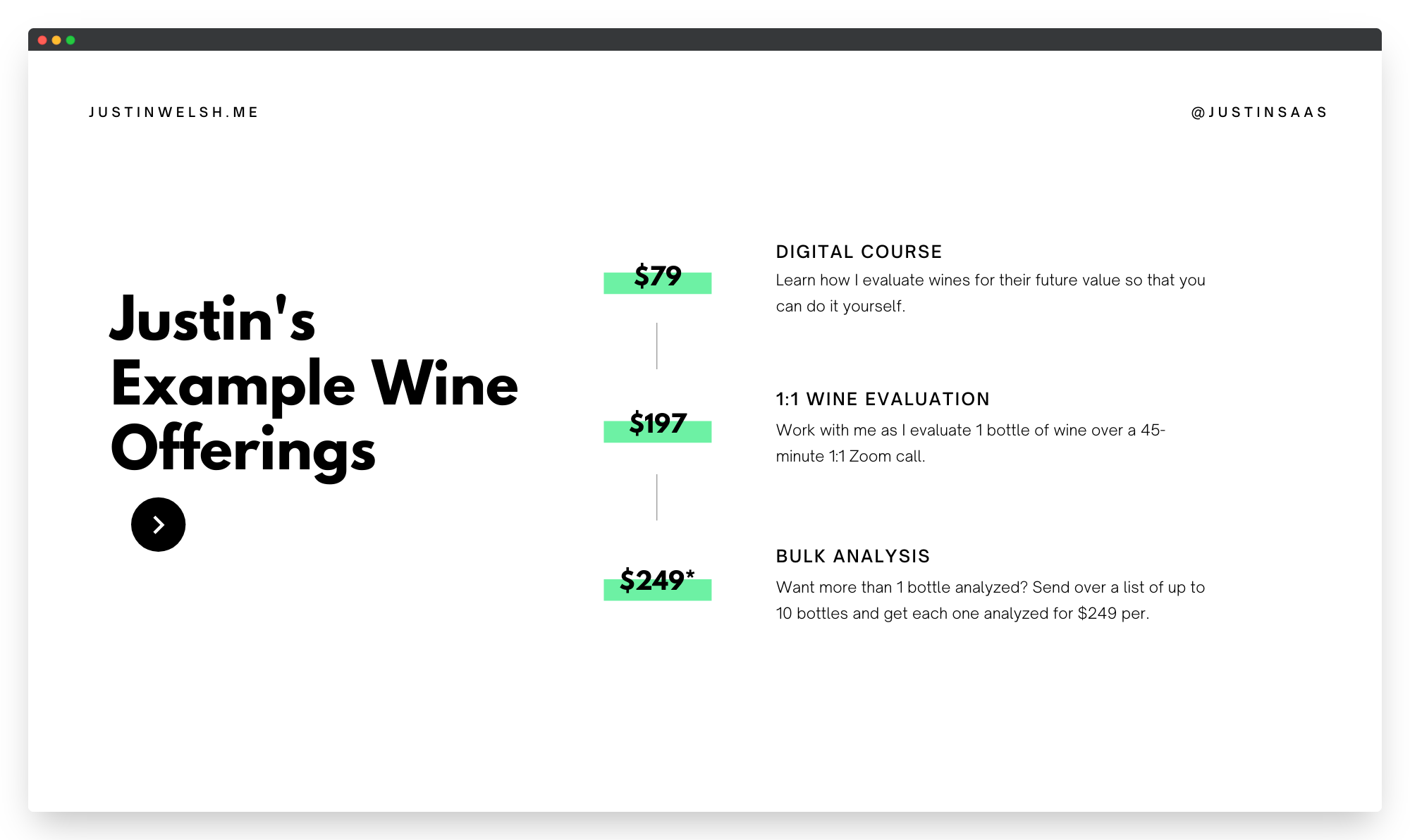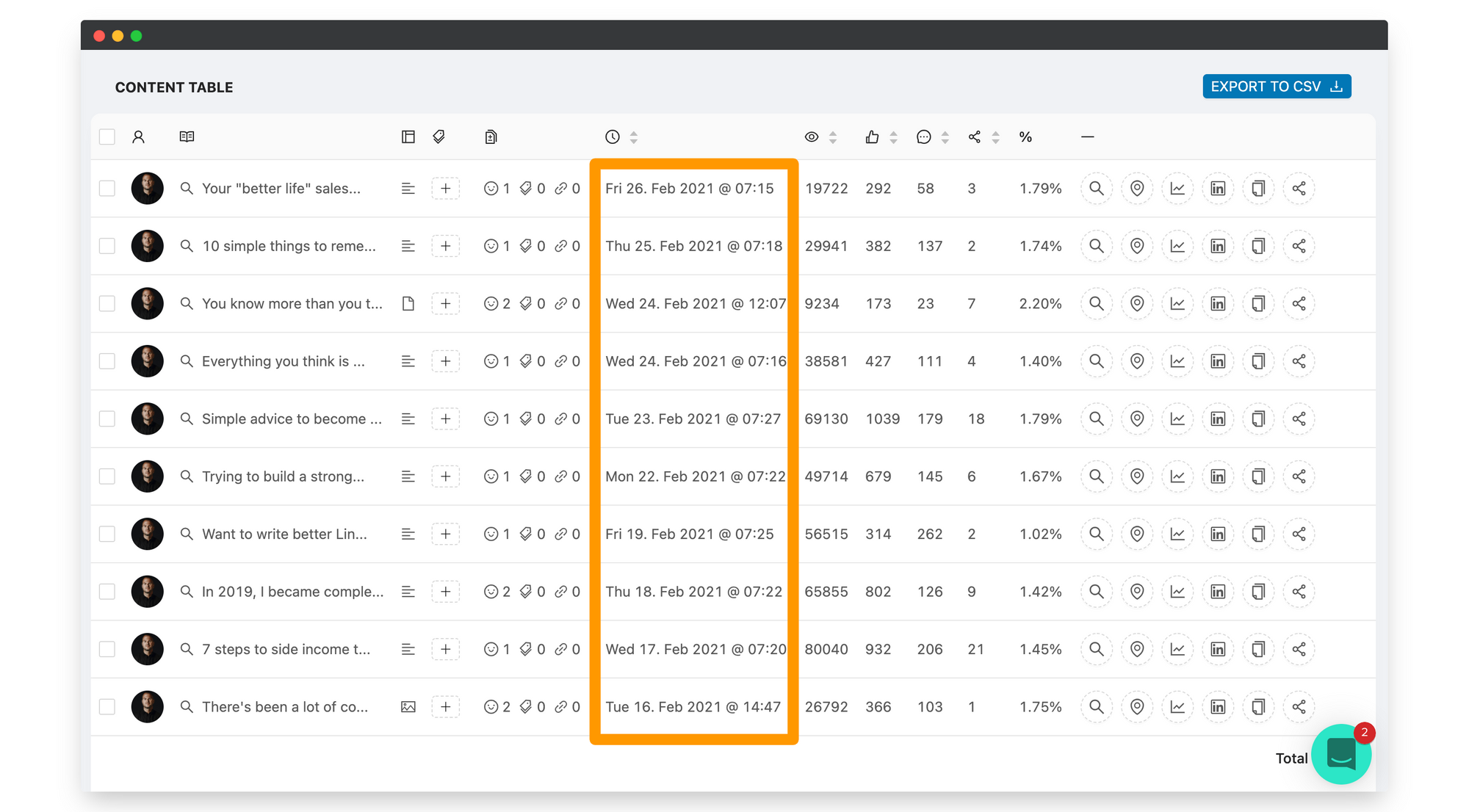I’ve made over $2.6M in the last 36 months online, including over $1.3M on digital course sales in the last 27 months.
I put together this free guide to share a lot of what I’ve learned. I’ll be updating it continuously as I learn and remember more.
This guide captures learnings from my actual work, wins, and losses. If you want updates, simply subscribe. I hope this is helpful.
Skip the “Get Rich Quick” stuff
To start, there are literally zero get-rich-quick schemes.
If someone is selling you that and you’re buying? You’re the fool.
Creating income online is a long game. If you want to play, have some patience.
Recognize where you are in the journey
It’s important to recognize that everyone has valuable knowledge to share. Don’t compare yourself to the people you idolize who are making money online. Not everyone is as far along on their journey as Gary Vaynerchuk.
Think about the things you’ve learned on your journey over the last 2-3 years that would be valuable to someone who is behind you on that very same journey.
That’s where the magic is.
Be prepared to face adversity
When you start creating content to attract potential customers, know these three things:
1) Nobody will care about you
2) You will get ridiculed at some point
3) Somebody will say something mean to you
If you can get over those three things, you have thick enough skin to get started.
Remember, everything worth doing is outside of your comfort zone.

Think at a macro-level
There are 7.67B people in this world. You can definitely sell 5, $54 digital products each day and make $100k+ per year, automated.
The people that win at this game are the people that get started and take action.
Nobody is doing this “perfectly”. Everyone is figuring it out as they go.
Why not you?
Ideation is difficult but there are unique ways
There are several ways to think of an idea:
1) Think of a product (terrible way)
2) Solve your own problem (a better way)
3) Create unique content that lets you own a micro-niche with very limited competition. I often refer to this as a “niche of one”. (best way)

A niche of one is a unique combination of skills and interests rolled into one idea and then distributed through highly creative or technical content.
Example:
Let’s say you’re a financial analyst and your interest is in wine. You could use your financial knowledge to project the value of one high-end wine bottle each morning.

It would be easy to create products and services with that simple idea.
For example, some people might enjoy a digital course teaching them your method behind wine price projections.
Others might want a 1:1 Zoom call where you apply your formula to bottles in their collection together, while some would likely just want to purchase a financial analysis of multiple bottles, without the video call.

Once you have your idea, it’s important to create an audience of prospects that are likely to pay for your products or services.
Create an audience of prospects with Moneyball
The best way to create an audience is to choose one social channel and become a master at it.
The best way to become a master is to start by playing “Moneyball”.
Moneyball means just getting on base every day i.e. creating content each day and not trying to hit viral home runs.
Compound interest is what matters in content creation.

Build an ecosystem of creators
It’s helpful to create an ecosystem of other relevant creators in your space.
Who else is aiming at your niche audience with a slightly different approach?
Make sure you interact with their content on a regular basis. Tether yourself to larger accounts and be active in their comments.
Turn on notifications and get to their content when it happens, adding a tremendous amount of value. Your goal is to be the most relevant comment on a piece of content that is seen by prospective customers.
Capture people that are interested
Design your social media profiles to capture people that are interested in your content.
If you talk about a niche topic, people should see images and copy on your profile pages that align with that.
Feature your work and website where possible and be very forward with what you write/Tweet/create about.
Your profile pages should be interesting enough to have people want to click the “follow” button.
Leverage the featured section (LinkedIn) and pinned Tweet (Twitter) to show off your expertise at a much deeper level.
Have an outcome in mind with your content
When you are creating content, think about it this way:
1) What outcome are you shooting for? Purchases? Dopamine? Email subscribers? Know your end game.
2) Is your content laser-focused on bringing people to your outcome?
3) Are you writing/recording/creating interesting enough content to get people to stop and listen?
4) Are your opinions boring, vanilla, middle-of-the-road, or do you have something interesting to say? Are your opinions strong?
Note: If you’re struggling to create content that resonates, build an audience, network with other creators, and find your tribe, I highly recommend my course, The LinkedIn Operating System. Right now, in 2022, LinkedIn is the easiest place to build a massive audience and business online.
Bring people into your world vs. social media
Do you have a landing page or website where someone can express interest if they want to learn more?
If not, go to carrd.co and whip up a simple landing page.
Move fast and cheap. Don’t worry about getting everything right.
Here’s a great landing page example from Starter Story:

Learn how to drive traffic
Once you have v1 of a landing page, then it’s time to drive some traffic there.
Since you’re already creating content for your primary social channel, why not start to drop that content in other places where people might be spending their time?
Places like:
- Medium
- Hacker News
- IndieHackers
- Facebook groups
- Private Slack channels
- Etc.
Every channel has its own algorithm and rules.
Start with a service business to learn more about your customers
If you can generate enough impressions on your content and start growing a nice following, you can build a small service business.
A service business is usually defined as trading your time for money and providing a service.
There are 3 levels when building out your service business:
1) Level 1: Low-cost service business with the goal of learning and acquiring testimonials.
2) Level 2: An “average cost” service business where your goal is to focus your niche to a very particular client base that you serve best and…
3) Level 3: A high-cost service business where you provide incredible service to a micro-niche and charge top dollar.
Systematize your service growth
The best process for moving through these 3 levels is called FITI:
- Feedback: get feedback from clients.
- Iteration: use that feedback to improve your business.
- Testimonials: get testimonials to improve social proof.
- Increase: increase your prices the more testimonials you receive.
One challenge of running a service business is how many manual tasks are required.
Make sure that you use low-cost, no-code (if you can’t code) software tools to make your job easier.
Here are some of my favorites:
- Website: Carrd
- Scheduling: Calendly
- Content Publishing: HypeFury
- Payments: Stripe & Gumroad
- LinkedIn Analytics: Shield
- Twitter Analytics: Ilo.so
- Website Analytics: Fathom
- Community Memberships: Outseta
- Customer Docs: Notion
- Notifications: Slack
- Customer CRM: Airtable
- Integrations: Zapier
Move to digital products
Once you’ve niched down to your favorite customers and raised your rates, it’s a great time to build out digital products that solve the common challenges you see other prospects having that either don’t fit your niche or can’t afford your services.
Timebox production
If you want to create a good digital product, timebox your production to 21-28 days and help those prospects solve that one common challenge.
The more common challenges you find, the more short, time-boxed courses you can create.
Keep it short, simple, and focused on one outcome
Remember, brevity is your friend.
Nobody wants to solve their problem in 10 hours.
Make your course 60-90 minutes and price it at a price that you think is reasonable and you would feel comfortable paying.
Make sure that the course is focused on solving one, big, problem your customers have talked to you about.
Don’t guess!
Take a customer from point A to point B in 60-90 minutes and you’ll have a satisfied group of paid students.
Ok, that’s all for now. Hope this was helpful.
